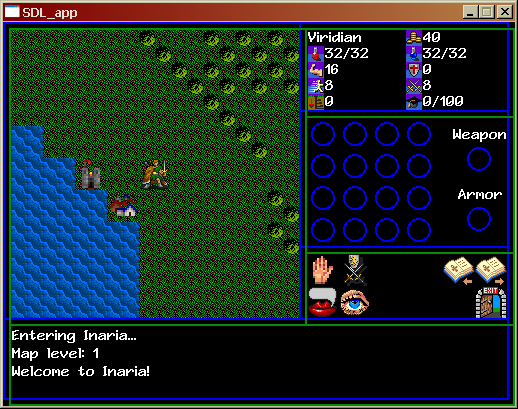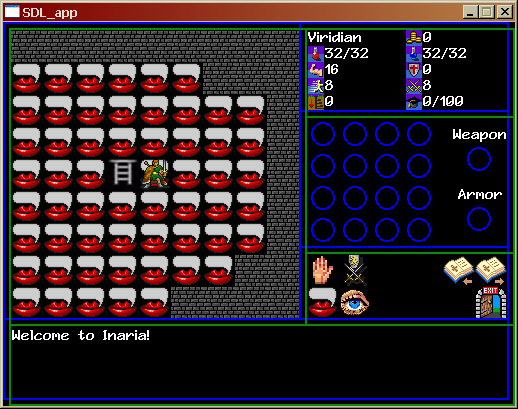So, I think I may have mentioned that I love the classic RPG Traveller. I think I also mentioned that long ago, I wrote a very simple RPG to play with my daughters that used one of Traveller‘s rules. Because I have come to the conclusion that Traveller‘s basic task resolution mechanic is perfect.
So what is the mechanic? You have skill ratings for whatever your character can do. Skill ratings range from skill-0 (newbie) to skill-4 (seasoned veteran). In order to find out if you succeed at doing something, you throw two six-sided dice, add your skill rating, add any modifiers the GM assigns (for difficulty, etc) and try to hit 8 or higher. This mechanic was simply called 8+.
But…that rule was only used for combat skills. For reasons I cannot fathom, the designers of Classic Traveller did not use that lovely, lovely 8+ mechanic for general skill checks. Instead, each skill had its own mechanics, resulting in a horrible mish-mash. How bad was it? Allow me to quote from Classic Traveller Book 1, Characters & Combat, 1981 edition:
Gambling: The individual is well informed on games of chance, and wise in their play. He or she has an advantage over non-experts, and is generally capable of winning when engaged in such games. Gambling, however, should not be confused with general risk-taking.
Organized games (as at casinos) allow bets of up to Cr5000, and require a throw of 9+ to win. Private games allow bets ranging from Cr50 to Cr5000, and require a throw of 8+ to win. Gambling skill allows a DM of +1 per level, but the house will always win on a throw of 2 exactly. Games may be crooked (throw 10+ to be dishonest) in which case the referee will stack the odds against the players. Gambling-3 or better will usually detect crooked games (throw 7+ to detect). Gambling-4 or better may be suspected of cheating and ejected (or worse) due to the finesse of the skill involved (throw 9+ to be suspected; DM -1 per level over 4). Characters may elect to use a lower expertise level in some cases in order to avoid detection of true skill level. Referee: Characters’ die rolls should not be divulged when gambling; instead merely inform the individual of wins and losses. This will serve to conceal any manipulation of the throws.
Most of the other skills aren’t much better; it’s all 9+ this and 3- that. It actually caused me physical pain to read the original Classic Traveller rulebooks and see them get this so wrong. Why not just use 8+ everywhere? It made no sense to me.
So, ever since, all us fans have been waiting for a “fixed” version of Classic Traveller.
Then MegaTraveller came out. Its designers wanted to more thoroughly integrate stats into the game. In Classic Traveller, stats almost didn’t matter once your character was created. It was very rare that any stat other than Education or Social Status was referenced in gameplay, and there were no mechanics for making a check against a stat as opposed to one against a skill.
So MegaTraveller introduced the idea of stat bonuses. A character’s stat bonus for any stat was stat/5, round down. This means that a below-average stat of 5 gives characters a permanent +1 bonus on any success roll that pertains to that stat – in addition to any skill that also applied. This had the result of inflating the success rate of rolls, prompting MegaTraveller to abandon the simple 8+ mechanic in favor of a system of four values, for Simple, Routine, Difficult and Formidable tasks.
Now, MegaTraveller is a good game. Its task resolution system is highly regarded because it provides very clear details on what modifications to success rolls mean and how they should be calculated. But not only does MegaTraveller not fix Classic Traveller, it isn’t even really compatible with it.
Then Traveller had kind of a dark age. Traveller: The New Era switched up the mechanics and made drastic changes to the Third Imperium setting that few fans seemed to like. Marc Miller, the original designer, tried to give us the “fixed Classic Traveller” with Marc Miller’s Traveller, but incomplete rules and a host of production problems prevented the product from clicking with players. Steve Jackson Games’ GURPS Traveller married the Third Imperium setting to GURPS’ realistic rules to great effect, producing some very good sourcebooks. But fans were still wanting a new version of the old rules.
Then things started getting better. In 2008, Mongoose Publishing came on the scene and produced a frankly excellent set of Traveller rules. Mongoose Traveller is well-regarded, but it leans towards the MegaTraveller rules, with characteristic modifiers still added to skills. It’s not as bad as MegaTraveller, since even getting a +1 modifier requires an above-average characteristic of 9, but it’s still an inflation of the original resolution curve.
Enter, at last, Cepheus Light, from Stellagama Publishing. Cepheus Light is Classic Traveller all the way, with several improvements. While there are task difficulty levels like in MegaTraveller, they are compatible with Classic Traveller‘s success distribution, and the majority of rolls during play will still be 8+ rolls. All skills use the same mechanics. While stats do have bonuses, they are never combined with skills, instead being used for things more like saving throws. And the system still only requires two six-sided dice.
And that’s that. Cepheus Light completely fixes Classic Traveller and I love it. Why? Why is a coherent ruleset based on the 8+ mechanic so important to me?
- Easy to remember. If you understand the mechanic and have done any roleplaying, you’ll probably remember the mechanic forever, even if you never play Traveller in any form.
- Easily obtainable hardware. Polyhedral dice are awesome and can be very pretty, but if someone is just getting into the hobby they can seem like a barrier to entry. “I’ll try it when I get some dice” can easily turn into “I never got around to trying it”. With this mechanic, all the dice you need can be filched from that Monopoly set in the closet.
- You can do the math in your head. The low die rolls and skill modifiers mean that the totals rarely come out to above 20.
- Players always want to roll high. Some systems use low rolls for some parts of the system like task resolution and saves, but high rolls for things like damage and reactions. It can be confusing, especially for new players. Cepheus Light makes it simple – you always want to roll high.
Does it have any drawbacks? Of course it does; nothing is perfect. (Yes, I know, I said it was perfect above. I may have exaggerated slightly for humorous effect.)
The main drawback is that the numbers are very “crunchy”. The use of 2d6 as the base roll means that success percentages jump radically as players gain their first levels of skill. Going from skill-0 to skill-1 raises your chance to succeed by almost 17%, and while the jumps get smaller as you increase skill, they are still significant. Because of this, games based off of these mechanics tend to have very slow character growth, which can seem unsatisfying to players familiar with other systems. Still, good GMing can mitigate this and I feel all the benefits outweigh this drawback.
Well, you read to the bottom of this article, so you probably have an interest in Traveller and/or Cepheus Light and you deserve a reward. While the main rulebook for Cepheus Light has a suggested price of $10, you can download a free version called Cepheus Faster Than Light, which covers the basic task rules, character creation and combat. It’s a great way to find out if you’re interested in the main game and makes a great handout for new players if you’re GMing a game.
And there’s already Cepheus Modern, a Cepheus Light spinoff set in the modern age…


